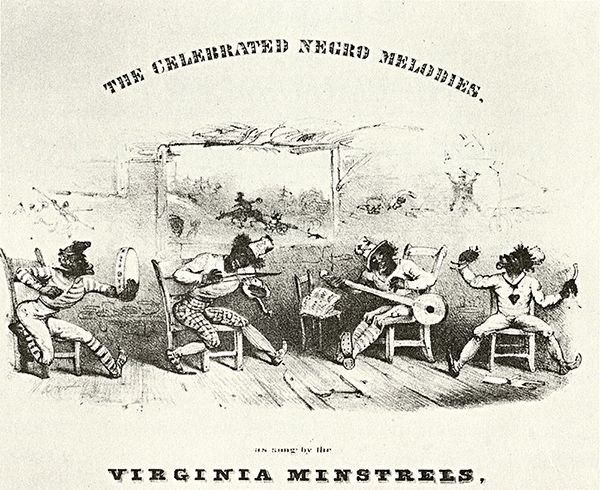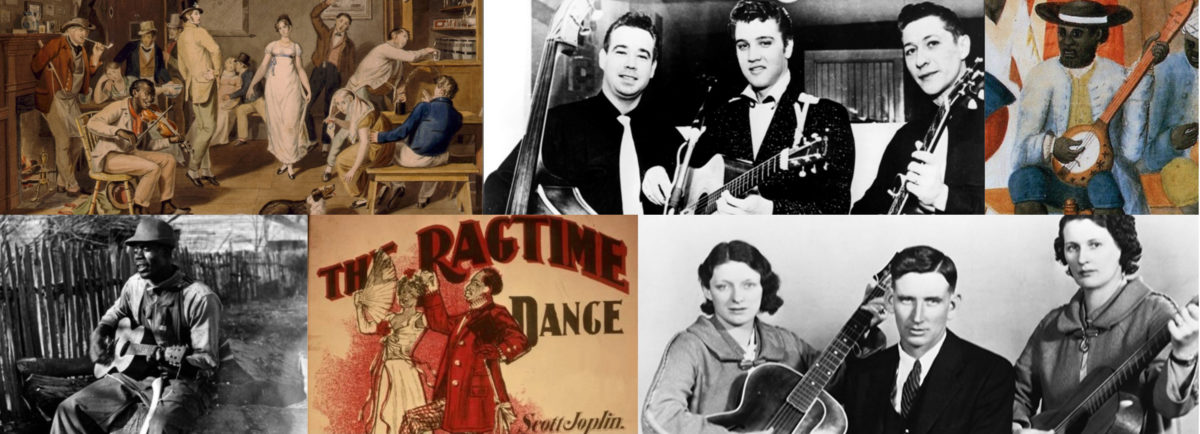
Minstrel shows were America’s most popular form of live entertainment from the 1840s into the 1870s, and they enjoyed continued success well beyond that. Minstrelsy was the first uniquely American theatrical form and one of the building blocks on which American music and entertainment is based. Featuring music and comedy skits performed primarily by white men made up with burnt cork, blackface characters portrayed African Americans in derogatory, comic exaggerations. While not an authentic representation of African American culture, as it was marketed to be, minstrel shows embodied elements of both white and black folk culture, including banjo styles learned from Southern black musicians. White performers dominated the industry, but black troupes also participated in minstrelsy since the 1840s. African American entertainers took to the minstrel stage in increasing numbers in the decades after emancipation, eager for any opportunity for advancement.
Minstrel performances were enjoyed primarily by middle and lower class white audiences. Black audiences, along with white audiences, attended shows by black troupes. Along with expressions of race, minstrelsy embodied ideas of class struggle and misogyny. Though they represented African Americans through cruel stereotypes, the popularity of early minstrel shows was an indication of working-class white America's genuine interest in the music and culture of African Americans. While the most degrading racist stereotypes gradually faded, blackface minstrelsy remained part of American culture well into the 1950s through stage performances, radio, television, and film.

